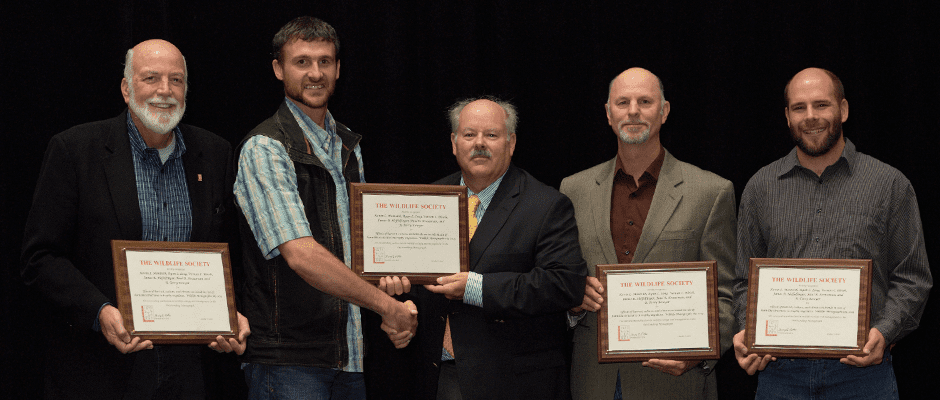Share this article
Four publications earn TWS recognition
When Michael Conover was around 10 years old, his playtime with his friends sometimes involved catching armadillos by wrestling them to the ground. Occasionally, he and his friends would even eat them for dinner.
Years later, Conover found out armadillos are reservoirs for leprosy. “And by tackling these things, you’re making contact with them — and eating them,” he said. “Wow, that was a stupid thing to do.”
Conover was one of four teams of authors who won Wildlife Publication Awards at the TWS annual conference last year in Raleigh, N.C. Other winners wrote on greater prairie chickens, horn-like structures in ungulates and the impacts of infrastructure on wildlife.
“I didn’t have a great appreciation for the risk that I was taking as a wildlife biologist or when I was a child,” said Conover, a wildlife biology professor at Utah State University, who co-authored the book Human Diseases from Wildlife with Rosanna Vail. The book targets wildlife biologists with information about diseases they can catch from wildlife if they don’t take precautions.
Armadillos aren’t the only animals that can spread diseases to humans. Each chapter of Conover’s book focuses on a different disease, including Lyme disease, plague and hantavirus. Conover said he hopes the book can help wildlife biologists become more aware of the risks they’re taking when dealing with wildlife.
“I don’t think that many other people in the wildlife profession have a true appreciation for these diseases or know which steps they should take to minimize that risk,” he said.
Virginia Winder and her colleagues won in the article category for their range-wide work on the female greater prairie chicken (Tympanuchus cupido) and factors affecting its space use.
In the study published in Ecosphere, Winder, an assistant professor of biology at Benedictine College, led a collaborative effort between universities, state agencies and private organizations to look at greater prairie chickens across a vast area stretching from Nebraska to New Mexico.
Using location data from marked birds, the team found the proximity to a lek, where the birds choose their mates, is critical. “If there’s not suitable habitat for nesting within a certain radius of the lek,” Winder said, “perhaps there should management to improve habitat quality for these birds.”
Rodney van der Ree and his coauthors took home the Publications Award for the edited book category for their Handbook of Road Ecology, which outlines potential impacts on wildlife from roads, rails and utility easements. The authors also look at how infrastructure is being improved to benefit wildlife affected by fragmented habitat.
Kevin Monteith and his colleagues won in the monograph category for their work on the effects of harvest, culture and climate on trends in the size of horn-like structures in trophy ungulates.
The Wildlife Publications Awards are one of The Wildlife Society’s oldest awards. First presented in 1940, just three years after the Society’s founding, the award recognizes works of excellence in scientific writing characterized by originality of research or thought and a high scholastic standard in the manner of presentation.
The deadline to nominate publications for the 2017 Wildlife Publication Awards is March 1, 2017. Click here to review the criteria and to learn how to submit a nomination.
Header Image: Recipients of the Wildlife Publication Award in the monograph category stand with TWS Past President Gary Potts. ©The Wildlife Society








